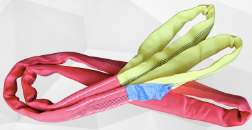Navigation
Menu Center
-
Product category
-
News Online
-
Application scenario

Contact: Manager Han
Tel:+0086 153 8402 0670
Mail:2873282030@qq.com
Add:Room 607, Deya jinzuo, Linping street, Yuhang District, Hangzhou China
Introduction to the dyeing process of lifting straps
Source:China Kaitaer Official Website Release date:2024-09-07
Lifting straps are divided into different colors, and different colors of lifting straps represent different tonnages. How much do you know about the dyeing process of lifting straps? Below we will provide a detailed introduction.
According to international standards, lifting belts are labeled with colors to indicate tonnage, with purple representing 1 ton, green representing 2 tons, yellow representing 3 tons, gray representing 4 tons, red representing 5 tons, and orange representing 10 tons.

When choosing a lifting belt, the size, weight, shape of the load being lifted, as well as the intended lifting method, must be taken into account in the calculation. At the same time, when selecting products, attention should be paid to the raw materials of the lifting belt. In addition, we highly value the color of the lifting belt. Generally speaking, the dyeing process of the lifting belt is as follows:
The dyeing of lifting belts requires pure color, uniform color, and no obvious color difference. If color difference occurs during the dyeing process of lifting belts, the following methods can be used to minimize the color difference on the belt skin and achieve uniform color. Place 2% -4% PALEGAL-SF in the dyeing tank, adjust with acetic acid with a pH value of 4-5, heat up to 125-135 ℃, and start heating and dyeing after 1-2 hours of treatment in the dyeing tank.
The above is an introduction to the dyeing process of lifting belts. If you have any other information you would like to know, you can call for consultation.
- Last: Why is it said that bearings are the backbone of lifting tac
- Next: Measures to deal with the failure of the limit device of the






